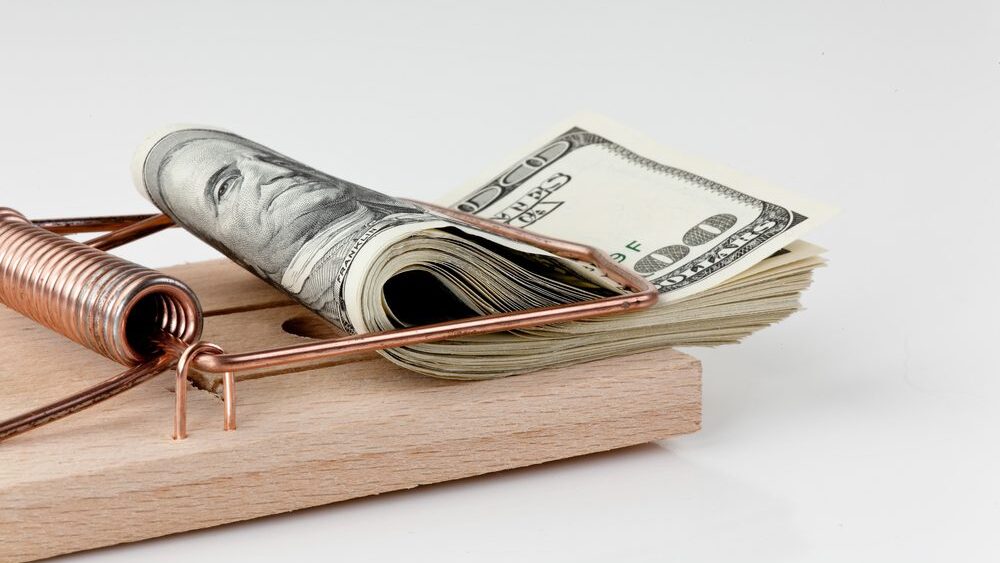A debate has erupted in America over the funding of the NATO defense alliance. It is centered around the question of whether or not Europe’s NATO members should live up to their commitment to spend at least 2% of GDP on their national defense.
Since their defense forces are their de facto contribution to the military capabilities of NATO as a whole, this 2% goal is not just a formality. If some of NATO’s members shirk their military spending responsibility, then NATO has to look elsewhere for the necessary resources.
Needless to say, the buck stops with America (pardon the pun) which, as I explained recently, could require an 11% expansion of the U.S. Department of Defense budget. If we are not going to hold NATO members accountable if they fail to spend their fair share, then we have to find a source for the replacement spending.
Based on the most recent comprehensive data on GDP and military spending for all NATO members, in 2021, the funding gap, due to 2% threshold shortfalls, amounted to $91 billion. In 2024 figures, this is equal to 11% of the expected U.S. defense outlays for the current year.
Can the United States fill that funding gap?
Before I answer the question, let me make clear that the desire of some American politicians to make a blank-check commitment to NATO is understandable. If, e.g., Russian president Putin senses a crack in the NATO commitment to mutual support, he may very well look for a way to exploit it.
With that said, though, military requirements do not supersede fiscal realities. If America is going to cover a European-sourced NATO funding gap, the money will have to come from one of three sources:
- Tax hikes,
- More borrowing, or
- Spending cuts.
Raising taxes is difficult in today’s American political climate. If Congress attempted to do it, they would have to spread out the $91 billion among the approximately 160 million Americans who go to work on a regular basis. If the extra defense funding was split evenly among those taxpayers, each one of them would have to pay $569 more per year, or $1,138 annually for a married couple (all other things equal, of course).
But the burden will not be spread out equally. It will be distributed based on the profile of the federal income tax system; if the $91 billion is levied according to existing tax brackets, then the 32 million—or 20%—who make the most money will pick up two-thirds of the new tax burden. To them, this means an average of $1,905 per year, or $3,810 per year for a married couple with two incomes at this level.
All of a sudden, the tax increase is no longer peanuts.
There is, of course, the possibility that Congress will pass some of the burden onto the corporate income tax. However, the businesses that pay that tax are far more sensitive to changes in the tax burden than individuals in the top 20% bracket. Furthermore, based on the most recent numbers from the Bureau of Economic Analysis, BEA, on corporate tax payments, a $91 billion increase would be akin to raising the corporate tax burden by 21%. This is politically unthinkable and economically undesirable—especially given the positive economic fallout from the Trump tax reform seven years ago.
If tax hikes are not possible, can the federal government borrow another $91 billion per year? A quick look at the federal budget suggests that it can: based on the BEA’s most recent numbers on federal tax revenue and spending, borrowing another $91 billion per year would only expand the running deficit by about 6%.
The only problem with this option is that the sovereign debt market is already skeptical of the future solvency of the U.S. government. Interest rates, a.k.a., yields, on U.S. Treasury securities are slowly rising, which is directly contrary to what they should be doing: in an economy that is showing weak but identifiable signs of a recession, those yields should be declining slowly.
Furthermore, the Federal Reserve has almost entirely won the battle against inflation. Although the central bank has not yet started cutting its policy-setting federal funds rate, it is widely expected to start doing so at one of the two next meetings with its Open Market Committee.
With a central bank en route to interest-rate cuts, we have reason enough to expect that Treasury yields should fall. Add to that a weaker economy, which reduces demand for credit. This in turn raises liquidity balances in the banking system. To continue to make money off their liquidity, banks have to cut interest rates, including offering lower rates to those who lend money to the bank. This drives investors to Treasury securities, raising their prices; when prices on Treasury securities go up, the yields decline.
Instead, Treasury yields are stuck at high levels or rising, as illustrated by these auctions of new government debt:
- The 4-week Treasury bill has been stuck since the turn of the year, paying 5.25-5.26%; if anything, it is ticking upward somewhat;
- The 8-week bill has been in the same yield bracket since November;
- The 13-week bill fell from a 5.3% yield in October to 5.185% at the end of January, but is now paying 5.205%;
- The 17-week bill fell below 5.2% a month ago, and is now back paying just over that level again;
- The 26-week bill paid 5.3% in September, fell below 5% in January, and has now bounced up to 5.03%.
The variations in yields may seem small and insignificant, but they mean a great deal to investors who offer tens—even hundreds—of billions of dollars at each auction of new government debt.
The U.S. Treasury is forced to maintain high—and even raise—yields on its debt just to keep investors coming back for another filling. Despite that, the ratio between money offered (or tendered) by investors and the debt that the Treasury wants to sell is slowly falling. This indicates a bit of concern among investors—especially as yields are on the rise.
To make a long, technical story short, it would be very unwise for Congress to simply rely on borrowed funds to pay for an 11% increase in defense outlays. Given the uneasiness already visible in the market for U.S. debt, loading an important part of NATO funding onto that very same market is almost like begging for a fiscal crisis.
The only option that remains is for Congress to cut spending. Is that possible? Let us return to that question in a coming article.





